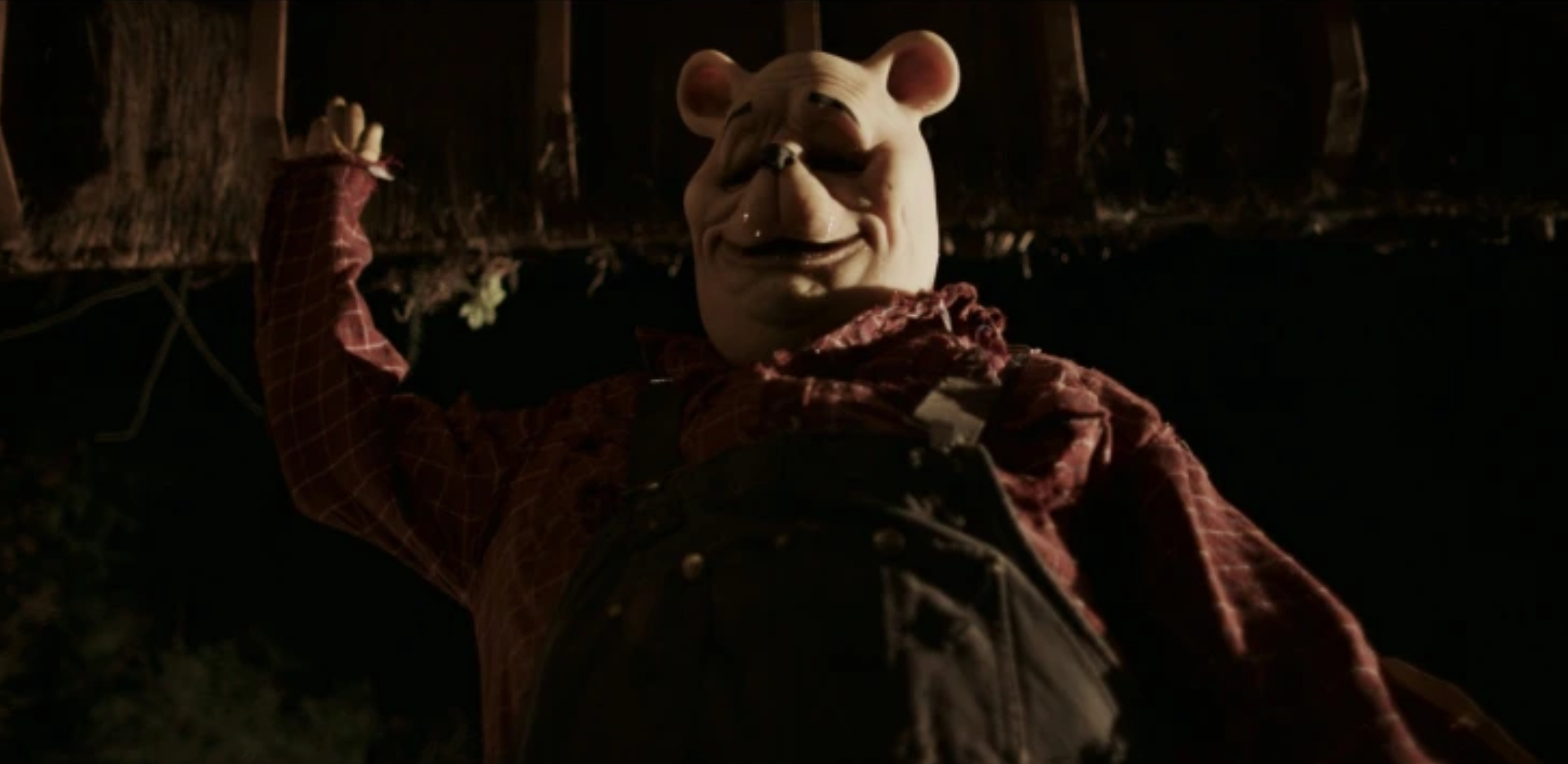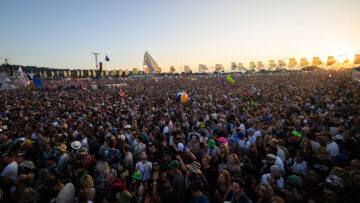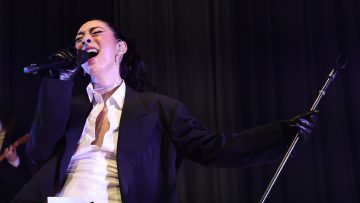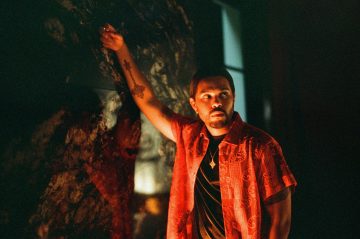It’s a quaint thought; author A. A. Milne in his Sussex home, penning the 1924 poem “Teddy Bear”, the precursor to his stories of an adorable anthropomorphic toy. Who knows whether when Milne and his son Christopher Robin roamed Ashdown Forest, on which the Hundred Acre Wood is based, his mind ever drifted from sweet, whimsical visions to the sinister possibilities of the woodlands.
Even so, it’s unlikely he could have envisioned his creation as a grotesque, 6-foot-tall, chainsaw-wielding beast hellbent on finding his next victim. But that’s exactly what we’re offered in Winnie the Pooh: Blood and Honey. Oh, bother indeed.
Rhys Frake-Waterfield’s debut film sees Pooh and Piglet abandoned by an adult Christopher Robin. Left with no food and protection, the once-lovable animals become feral, vicious predators. The barbaric way in which these cherished protagonists are seemingly allowed to be portrayed is unexpected. But it’s because, in January 2022, Winnie the Pooh reached its copyright threshold and was officially released into the public domain.
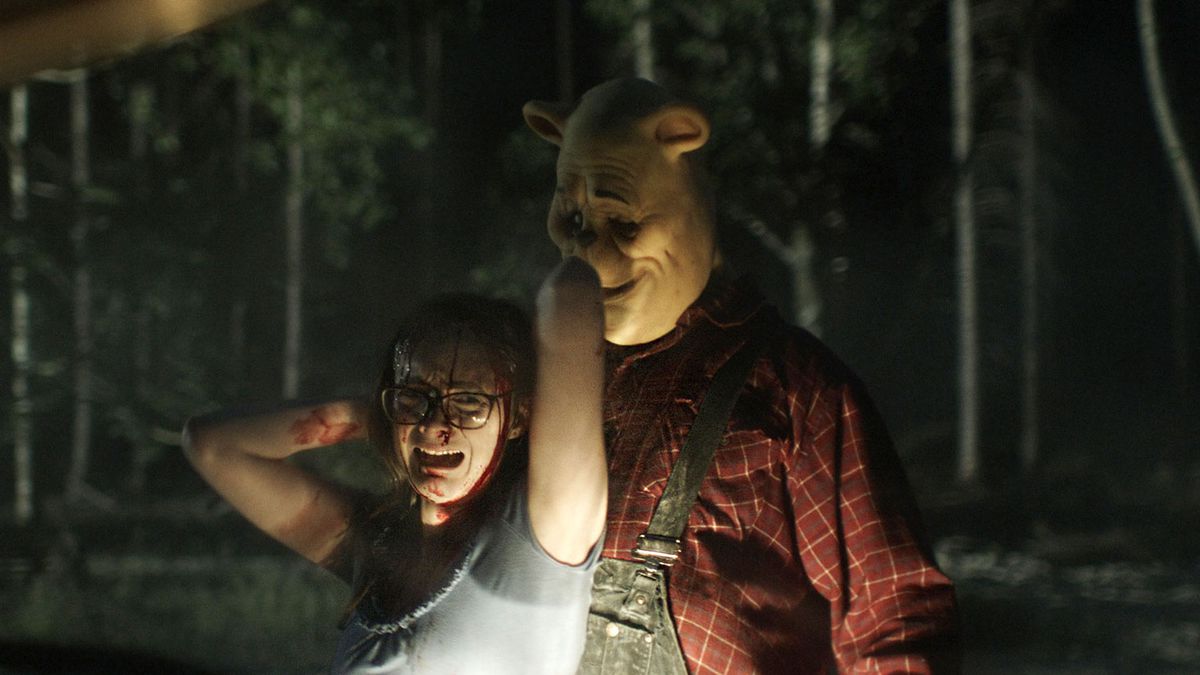
Credit: Altitude
After the film’s trailer went viral last year, Frake-Waterfield received a budget injection to re-shoot scenes, but it’s still a fringe production. The buzz surrounding the film is a slasher director’s dream – disgust, anger, and cries of “blasphemy”, “disrespect”, and a “ruined childhood”. As a horror fan, I see merit in everything from blockbusters to B-movies. I can get behind schlocky takes on existing intellectual property if there are elements to sink your teeth into – clever commentary or campy references to the source material. We don’t need more hot-girls-get-hunted stories churned out on the misogyny mill, but if we’re offered something original, I’m game.
Critics are divided (but largely reproving) on where the film lands on the aforementioned and whether it achieves its intended aim of blending formidable horror and facetious comedy. But on a broader scale, could it impact upcoming genre trends? If we take our fixation with dark retellings of classic tales, horror’s unsettling obsession with childhood terror and the potential for reappropriating public domain characters – we might be staring down the barrel of an era of “childhood ruining” horror.
For as long as humans have told stories, we’ve had a fascination with the macabre, and it doesn’t take much to draw a line from decent to depraved. We love to delve into a text’s darkest possibilities, no matter how bright the original content. Was Willy Wonka a child killer? Are the babies in Rugrats figments of Angelica’s traumatised mind? Is Spongebob Squarepants really about nuclear testing? Probably not, but it’s clear that we have an innate lure to morbidity.
A wave of gritty reboots has led iconic characters down a shady path into thrilling, horrific, mysterious and dramatic territory. We’ve seen comic book classics like Archie adapted into the melodramatic Riverdale and Sabrina the Teenage Witch upping the creep factor for The Chilling Adventures of Sabrina. The Joker transformed from a theatrical Batman villain to the eponymous star of a harrowing story of poverty, nihilism and mental illness in 2019’s Joker. Generally, studios buy the rights to use these characters. They agree upon terms of use, and it’s usually mutually beneficial for an older property to be revived for a new audience. But it’s more dubious when it comes to horror. Owners of classic characters might not mind a slightly grimmer take, but will likely draw the line at all-out gore.
In the coming years, several other characters may face the same fate as our tubby little cubby. Mickey Mouse will enter the public domain next year, albeit strictly the first iteration from 1928’s Steamboat Willie. Similarly, Frake-Waterfield had to base Pooh on the unclothed 1926 version to avoid copyright issues, which is why his iconic red-tee-sans-pants look is replaced with a lumberjack outfit. It’s also why characters still protected under copyright, like Tigger and Eeyore, don’t appear.
Other notable characters entering the public domain in the next few years include Popeye, Bambi and Tarzan, none of which seem too far removed from a possible horror reboot. In fact, Frake-Waterfield seems to have carved out an interesting niche for himself. He’s already a producer on Bambi: The Reckoning, in which the baby deer mutates and goes on a murder spree, and he is set to direct the upcoming Peter Pan’s Neverland Nightmare.
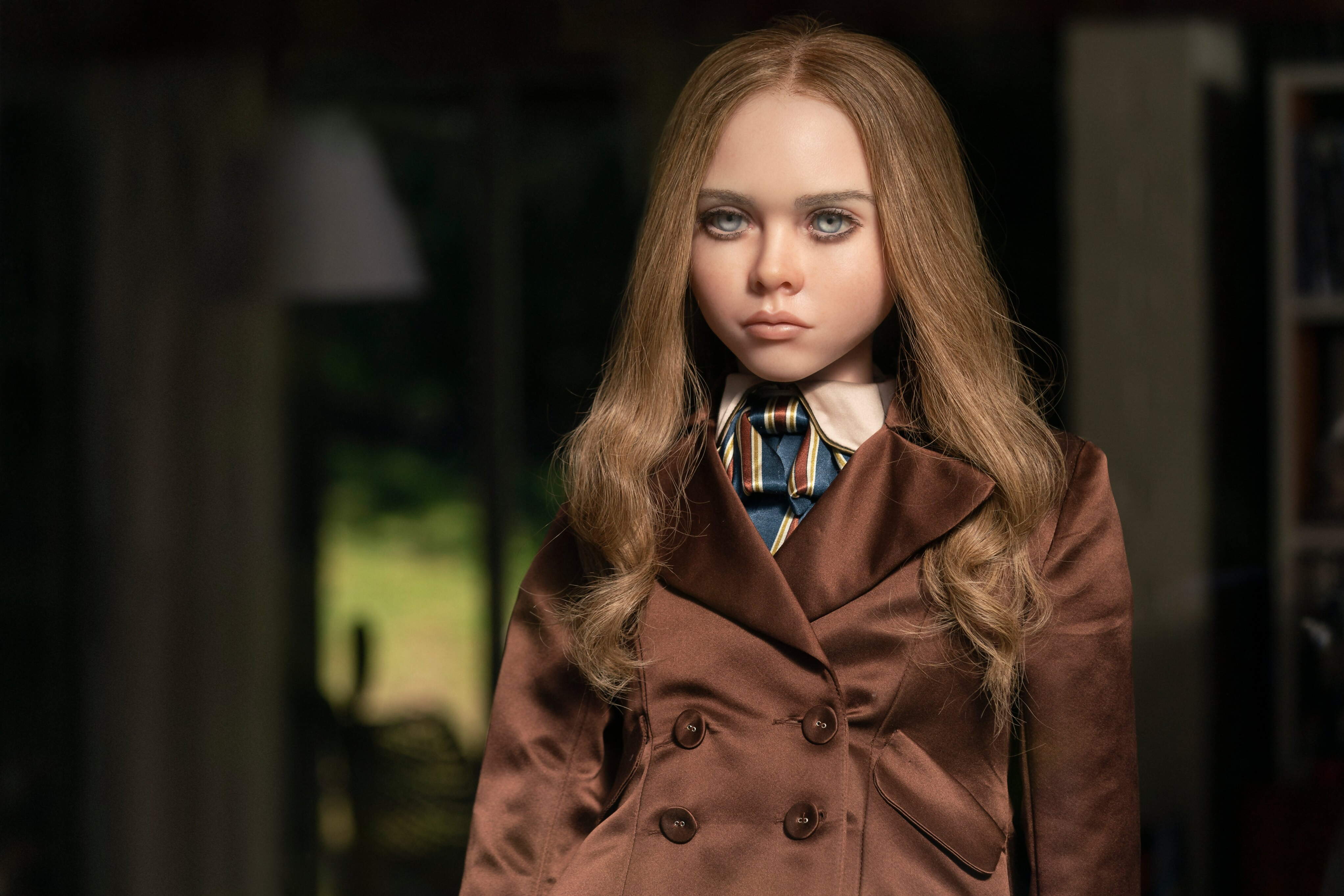
M3GAN. Credit: Universal Pictures
Children’s playthings (Child’s Play, Annabelle, M3gan) and children themselves (The Omen, The Exorcist, The Shining), have long been used as devices to pervert innocence. The inversion of expectation is unnerving and plays on instinctual fears. This feeling of childhood dread has been a significant theme in horror of late. This year we’ll see The Boogeyman creep out of the closet and onto our screens, and last year, Kyle Edward Ball’s Skinamarink was a surprise hit.
Whether it’s elevated and experimental like Skinamarink or campy and violent like Winnie the Pooh: Blood and Honey, these films capitalise on similar deep-seated anxieties. When Kyle Edward Ball asked Redditors to recall their childhood nightmares a few years ago, a response about waking up in an empty, windowless version of one’s home inspired his debut feature. Someone could have just as likely offered a dream in which childhood toys come to life and turn evil. Regardless of the outcome, these horrors come from the same place of visceral childhood terror.
Many public domain characters like Dracula, Dr Jekyl or Frankenstein’s Monster already have an established horror connection due to their origins in Gothic or folk literature. Then there are those which are more modern but equally well-known, like Lewis Carroll’s Alice and L. Frank Baum’s Dorothy who have been adapted into countless works, some darker than others.
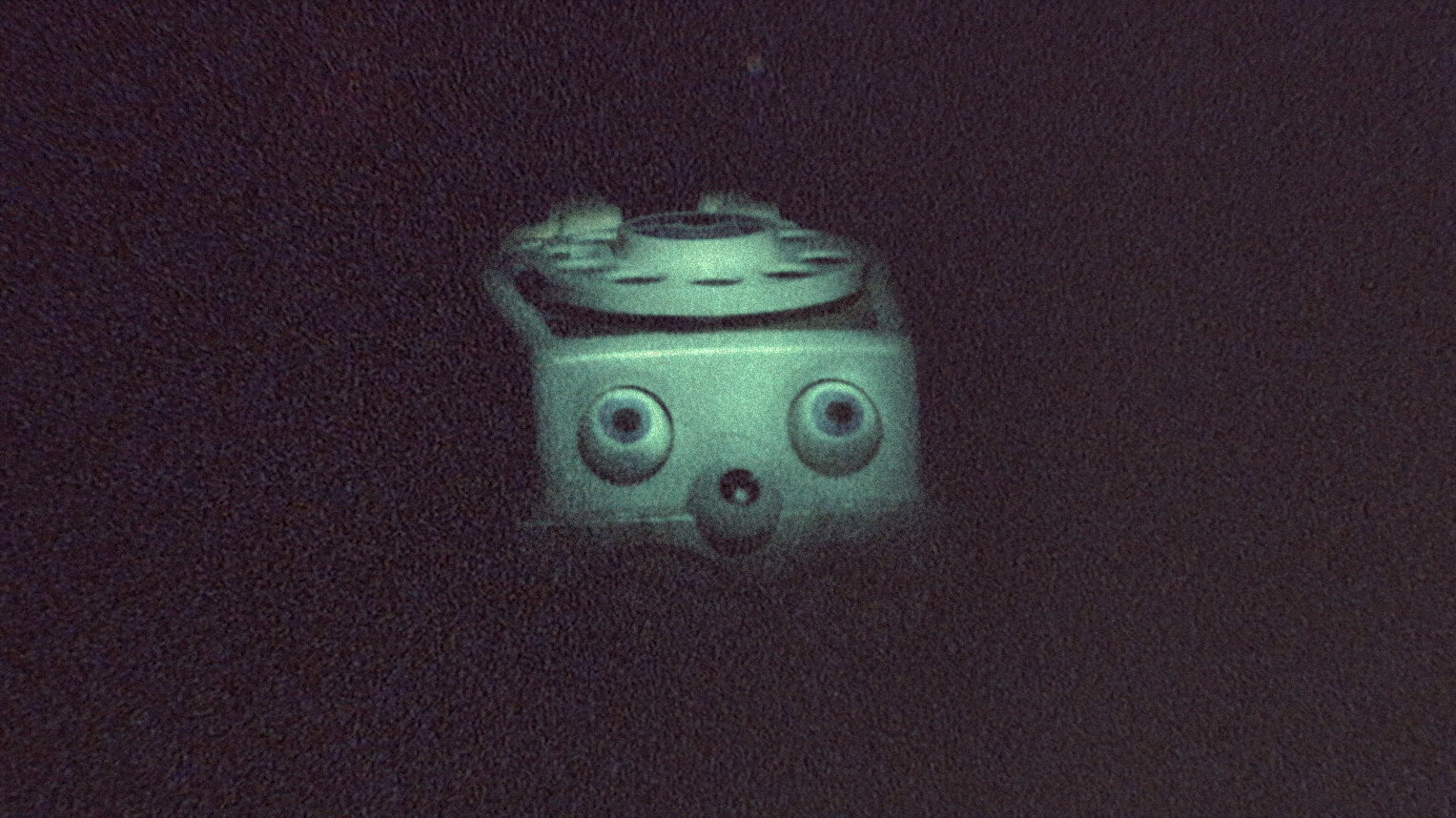
Skinamarink. Credit: Shudder
But given the golden age of horror we’re in, the themes explored in recent horror fiction, and the possibility of more bizarre depictions of childhood heroes, we might see them take some scarier directions. What feels markedly different about Pooh’s foray into horror is the purity and nostalgia of the source material and what that represents. Turning a protagonist like Winnie the Pooh into such a villain takes the concept to a new level.
At worst, I expect we’ll get a flood of low-budget, (hopefully) fun movies that exploit existing characters (I’m getting my bets in for Paddington Bear: Marmalade and Murder or Thomas the Tank Engine: Ghost Train). But at best, it’ll widen possibilities for filmmakers and provide creative parameters in which they can work.
It will be interesting to see whether creators will be pushed into new and unique ground or whether we’re merely in for an era of standard horror tropes dressed up in nostalgic costumes.

